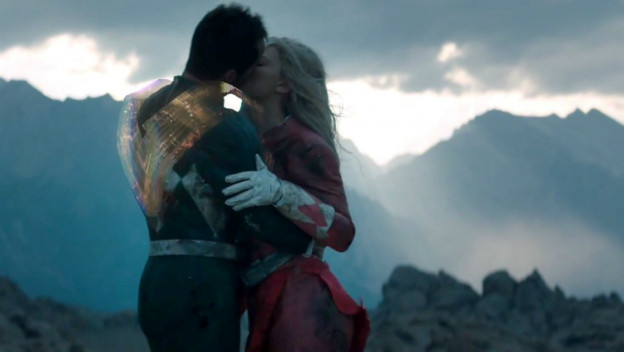Castlevania is not a brand with a rock-solid aesthetic. Castlevania is not held down by lore. Despite struggling with consistency and relevancy for years, Castlevania is special. Look back into videogame past and see how irreplaceable the original NES trilogy is, and how influential Symphony of the Night was and remains. Castlevania is required reading for any self-proclaimed gaming historian. So when Netflix reminds us all a Castlevania TV series is not only in the works, but coming this year, people are going to be nervous about it. Especially considering the creative team and vision on display so far.
While the Netflix distribution of Castlevania is news, the TV series itself is not. Way back in summer 2015, producer Adi Shankar was announcing his involvement on Twitter, and conducting interviews about the project. The series is reportedly based on Castlevania III: Dracula’s Curse and is written largely by modern comics legend Warren Ellis. The animation is being handled by Frederator ( Adventure Time, The Fairly Odd Parents ). Those two names together tell me one thing in particular: this show is going to be edgy as hell.
Frankly, edge and grit are not the path to good storytelling, to good representation of what these games mean in the greater cultural context of games and gaming. Edge and grit can be fine in many situations, such as Shankar’s pet project Dredd 3D , which was insane, creative and thoroughly dark. On the other hand, Shankar is also the name most strongly associated with Power/Rangers , a viral fan film that teetered on the line between satire and schlock, but in a way that totally sucked the joy out of the source material in favor of dangling low-hanging fruit in its audience’s face like a set of plastic keys.
Shankar has gone on record as saying, “It’s going to be dark, satirical, and after a decade of propaganda it will flip the vampire sub-genre on its head.” I read this sentence and several things about Castlevania that resonate the most with me come to mind. I remember the cheeseball bleeps and bloops, somehow channeling speed metal, bursting from the NES carts. Then, I think about how that old-school, no-frills feel transformed into the fantastical, yet somehow also subdued and reserved, mood of the PlayStation era. After that, we enjoyed the gothic absurdity of the GBA and DS titles. Even the slightly off-kilter Eastern European folklore of the first Lords of Shadow had some distinct charm.
The quote also shoots me back to my face contorting into an explosive eye-roll as I watched Power/Rangers when it was spreading like a sleazy wildfire. It reminds me of the awkward E3 demos of Lords of Shadow 2 making everyone uncomfortable. It brings me back to how dull the first one grew after the Guillermo del Toro-like imagery outgrew its welcome in the midst of a self-serious, banal plot and odd sections of frantic, me-too AAA novelty sections.

Castlevania isn’t about being edgy, violent, gritty or subversive. It started as a celebration of classic horror (think Universal Monsters) and evolved into something more aesthetically thoughtful. Sure, there was never much of a plot beyond “Dracula is the bad vampire man; hit him with a whip,” but much more than that isn’t necessary. It doesn’t need to be “subversive” or provide goofy commentary on vampire media, it just needs to have that higher level of thought put into the tone, the mood, the visual design.
I’m not entirely writing the Castlevania show off. The talent behind it is legitimate talent. I also get that grit and schlock is where the money is right now. Just look at Game of Thrones and the rise of HBO and Netflix as adult-oriented content providers. But if everything follows the same model, what good is being edgy when it isn’t actually edgy anymore? What does subversive mean if you aren’t countering the culture at all? We need to push creativity, not boundaries, and Castlevania should be the perfect vehicle for that. But, this is probably better than us getting pachinko machines, am I right?
